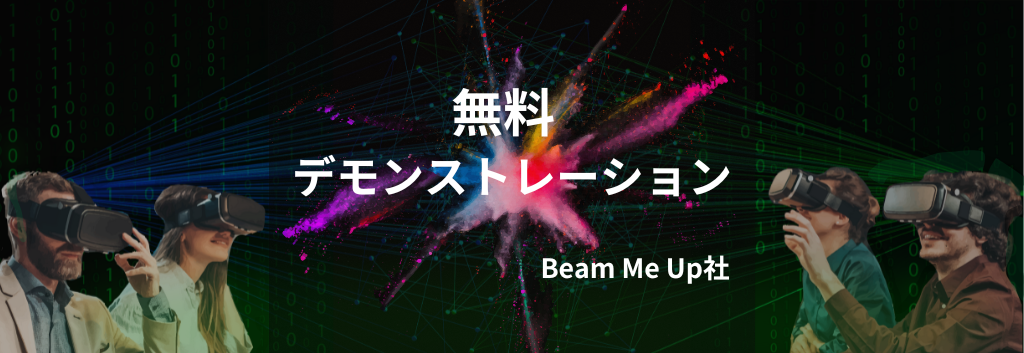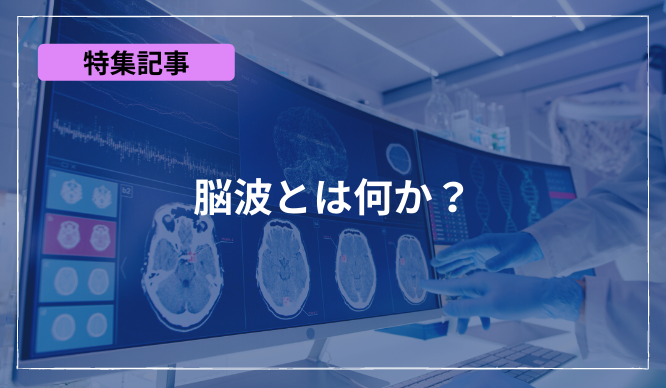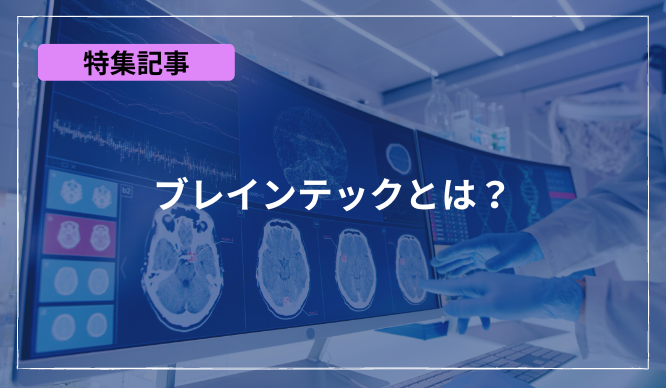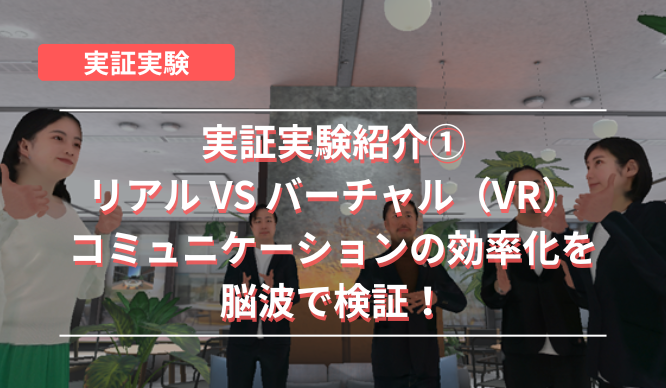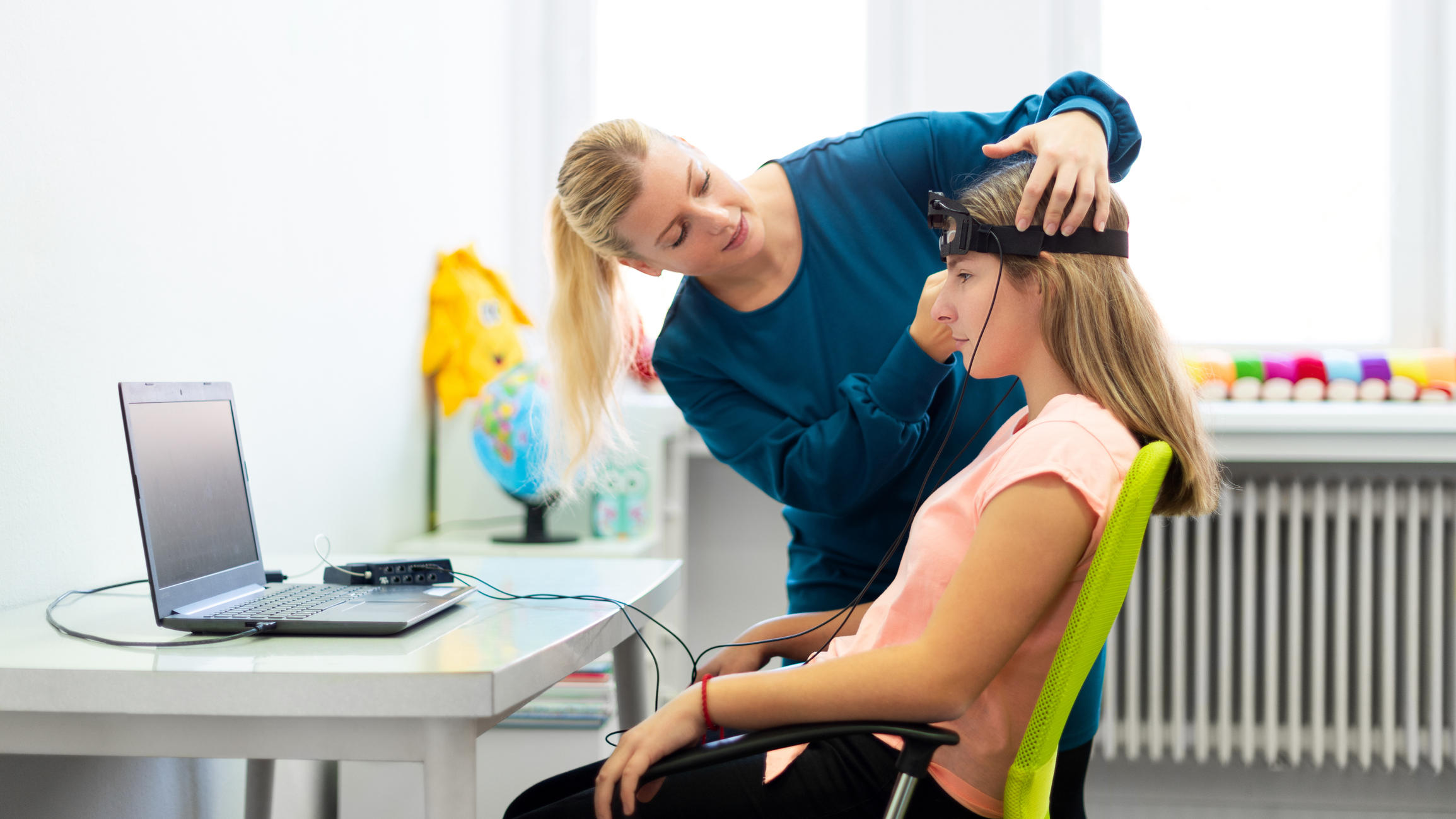Application for evaluation machine
Brain waves don't lie!? Emotion analysis using "NEO" was interesting! [Braintech Experience Vol.1]

In recent years, electronics, machine learning, and brain science have made remarkable progress. Under such circumstances, "Braintech", which combines brain and technology, is attracting attention around the world. Macnica is developing a variety of solutions using "brain waves" in this field.
This time, I would like to share the fun and depth of brain tech with you, so I have written a report about my experience in measuring brain waves, putting my body at risk (?)!
What is "NEO"?
I was very excited from the moment I received the explanation of this project in advance. After all, I had heard that the content of the experience was ``emotional analysis using brain wave reactions.'' I wonder if I will ever have the opportunity to measure my brain waves in the future...! ? Moreover, doesn't it look interesting to be able to analyze emotions from brain waves?
--Then, on the day of the experience, there was a preliminary explanation from the product staff. First of all, this time we will talk about“Neuro Experience Optmizer (hereinafter referred to as NEO)” ”software service. Second, NEO has the ability to visualize and analyze the emotions people feel in various situations.
For example, the feelings that people feel when watching a video or playing a game, such as "fun" or "boring," are qualitative and difficult to objectively evaluate. That said, content creators want to get as accurate feedback as possible from users and brush up on their content. That's where NEO comes into play.

The great thing about NEO is that it can quickly and accurately read users' emotions and perceptions about content and visualize them. Furthermore, it captures emotional changes in real time. The collected data can be viewed or downloaded on the web, so creators can use it as a reference to move their development in a better direction.
There are a wide variety of use cases, including games, movies, dramas, and VR content. The great thing about VR in particular is that you can enjoy it while immersing yourself, but it is extremely difficult to accurately express what you get from the experience. However, if emotions can be quantified, it may provide hints for finding areas for improvement. There are many other ways to use NEO. As I listened to these explanations, I thought, ``The brain tech market seems to have a lot of room for growth.''

By the way, NEO was developed by BEAM ME UP, a company headquartered in Montreal, Quebec, Canada (the website is in English). The company, which has a vision of improving people's behavior and cognitive abilities, has specialized knowledge in biometry and AI, and provides software that integrates embedded modules with artificial intelligence functions.
I actually tried it!
Preparation
After receiving a general explanation, it was time for the exciting actual event. This time, we decided to measure the ``emotions experienced while watching videos.'' When I was asked what videos I wanted to watch, I requested a compilation of a certain anime that I've been into recently (this decision had a surprising effect on the outcome...).
To measure brain waves, we use an electroencephalograph called an Electro Encephalograph (EEG). `` NEO is only software that analyzes emotions from brain waves, so it requires separate hardware to physically read brain waves, that is, EEG.'' Also, there are various types of EEG, but this time it was a rather simple one.


▲The protrusions sticking out here and there are electrodes that read brain waves. This headset had 10 electrodes, but high-densityEEG has as many as 128 electrodes.
▲Equipped with a headset and smart glasses for watching videos. It's quite surreal, but the person in question is very serious (who is the ter-inator!).
I'm very particular about my hairstyle, so the headset didn't really stand out...
I used this time VITURE Inc. smart glasses are here
Measurement (1st time)
Anyway, let's head to the measurement start. Before the video started playing, I was thinking about things like, ``Which scene is going to come? Will I feel more excited if it's my favorite part?''
But immediately after that, I sank into an abyss of despair.
(I haven't seen this scene yet...!!!)
yes. As expected, I was completely caught off guard by the spoiler. Since that anime is still being watched with rave reviews, I shouldn't have watched the compilation so easily... It was a huge mistake.
(It's dangerous, it's dangerous!) (But I'm curious about what happens next!)
Emotions that shake you like a roller coaster. After about 2 minutes, the video stopped. I decided to ask them to show me the measurement data. I feel both relieved and frustrated... I thought that people's emotions are very selfish.

Here is the result. Emotions are color-coded and represented in a pie chart. One particularly strong emotion was ``Worried,'' at 26.67%. This is probably because I was nervous (please! At least don't show the super important scenes!!).
This is followed by "Calm" at 16.67% and "Hopeful" at 15.00%. It's my favorite anime after all, so I think it's a sign that I was excited about it. Other than that, ``Confident'' and ``Frustrated'' were the same at 11.67%, while ``Taken Aback'' was higher at 8.33%. Overall, I feel a mixture of expectations and anxiety...
After receiving this result, I felt that "NEO's accuracy is high." The reason, of course, is that it clearly expressed my feelings after being unexpectedly spoiled. If the video contained only scenes I had already seen, I would probably have fewer negative emotions and more positive emotions.
"Brain waves don't lie..." It was an objective experience.
Measurement (2nd time)
For the second measurement, I tried watching an intense action movie. It's a suspenseful story filled with shooting scenes and car chases. By the way, this work is part of a series and I had seen the previous works, so I thought to myself, ``It's been a long time.''
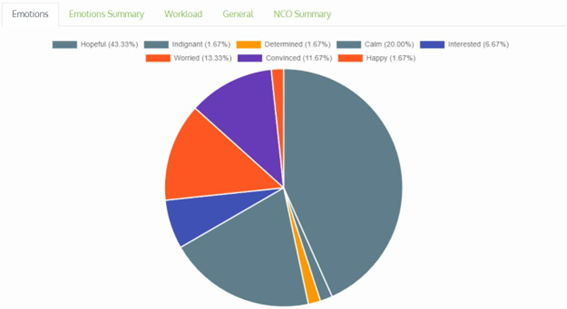
First, let's look at the same graph as the first time. This time, the most common response was "Hopeful" at 43.33 %. This can be said to be a direct result of their feelings toward their favorite works and their expectations for the interesting content.
The next highest responses were `` Calm'' at 20.00 %, `` Worried'' at 13.33 %, and `` Convinced'' at 11.67 %. Watching the fast-paced and powerful scenes, you can get a glimpse of the complexity of people's emotions, as they calm down but are worried somewhere. Also, by watching a different video than the first time, the results were completely different.
Furthermore, after the second run, we received the results and asked them to perform a more detailed analysis.

In this graph, you can see the fluctuations of emotions over time. Since there are a large number of items and the appearance is complicated, we will omit the details in this article, but it is also possible to display pinpoint information on the data viewing screen. Therefore, it is useful for understanding things such as ``At what timing and which emotions were particularly strong?''

At the end, “Engagement (This is a graph showing "attention/interest)". This can also be viewed along with the time axis. This time I was watching with great concentration until around the 54th second, but it seems to have dropped significantly after that. I didn't realize it myself, but the scene change in the video may have subconsciously weakened my interest.
A drop in user interest in any content is basically considered a negative factor. It can be said that it is useful to be able to obtain such data.
Summary
This time, we have delivered the author's experience report on NEO. This was my first attempt, and there were a few hiccups (?), but I was surprised at the high level of accuracy, and personally had high hopes for the potential that NEO held.
At Macnica, we are always accepting applications for demonstrations where you can try NEO for free. For those involved in content development, as well as those interested in software and services that utilize brain waves, why not try out a fun brain wave measurement for yourself!
Related information
free demonstration
What is "objective content evaluation" based on brain waves?
I would like to visualize people's unconscious emotions and cognitive states based on brain waves.
I'm sure there are many things you don't know, so why not measure your brain waves and experience what it's like?
After the actual measurements, we will share examples of how AI has been used in our activities so far, so that we can better utilize AI using brain waves at our customers' sites.
We will support you from proposal to implementation and operation.
Document download
We have information related to Brain Tech, such as catalogs and white papers, so if you would like to know more, please download the materials here.
Inquiry
If you have any questions regarding this article, please contact us below.
